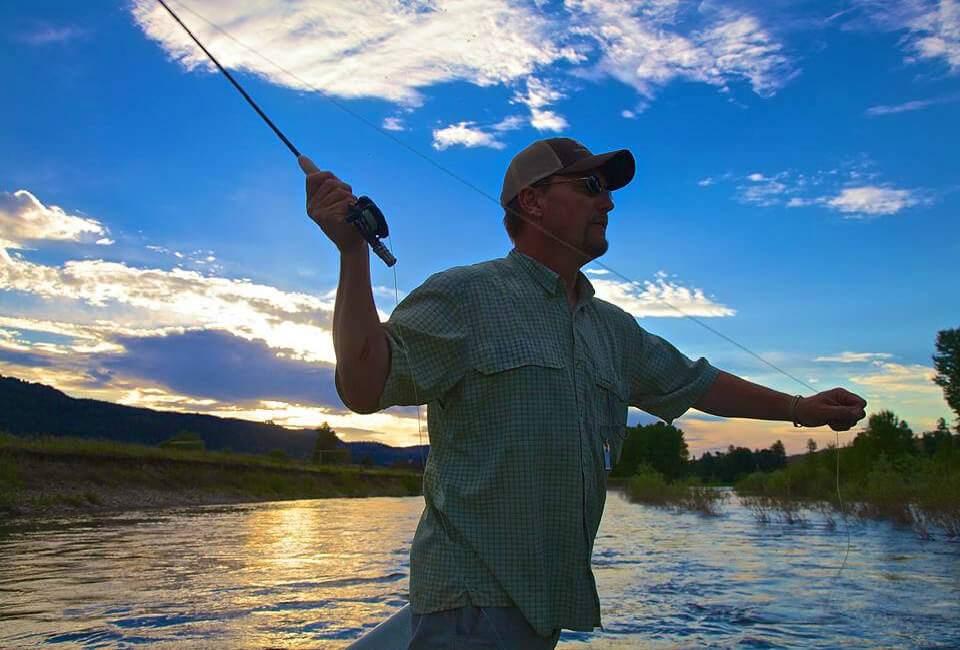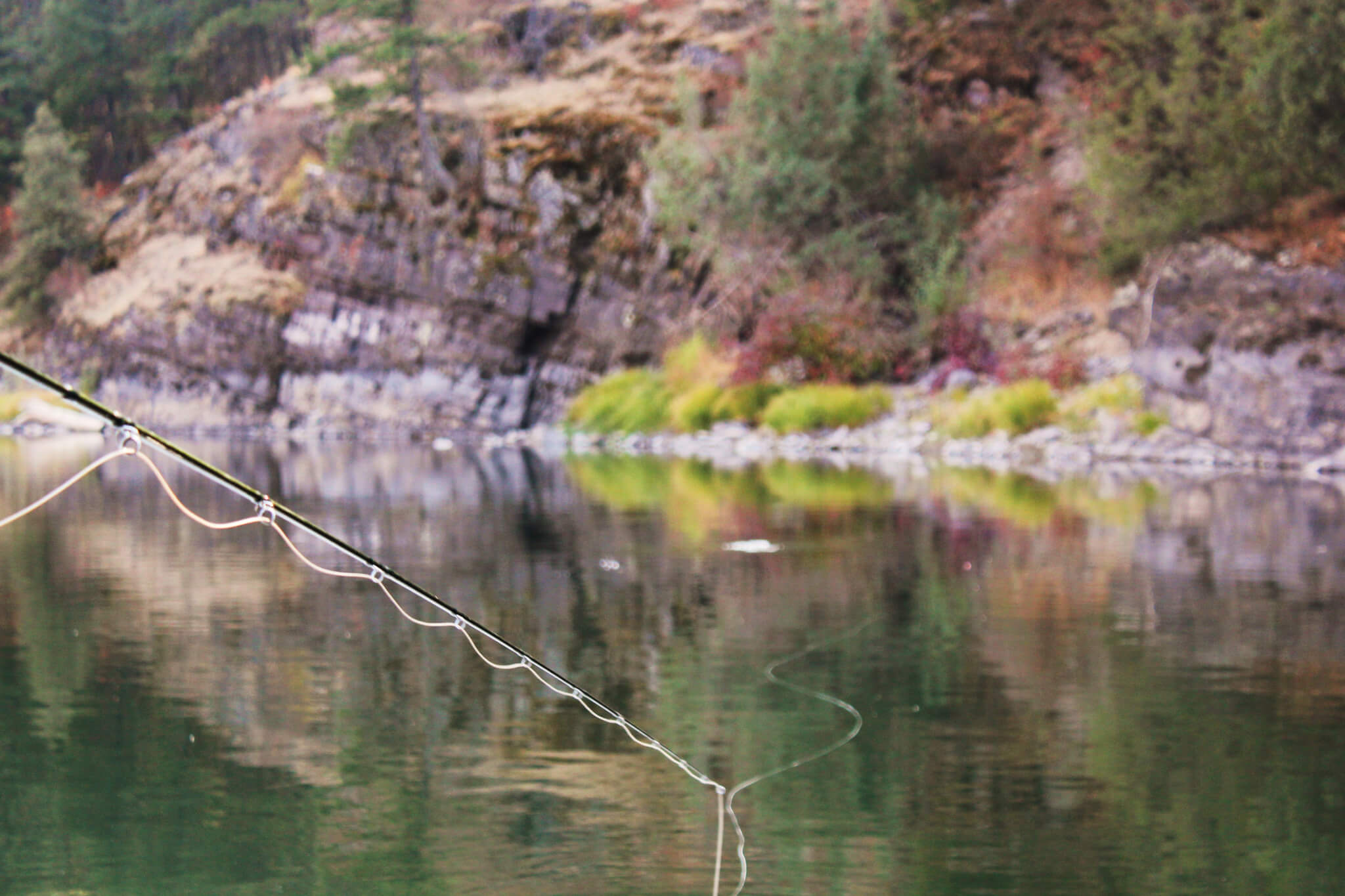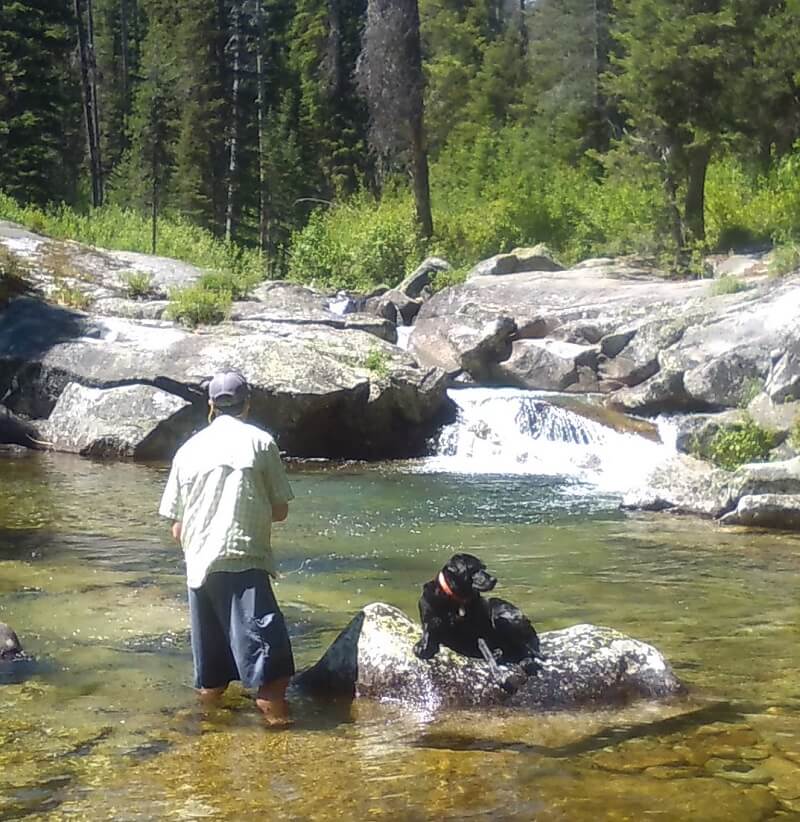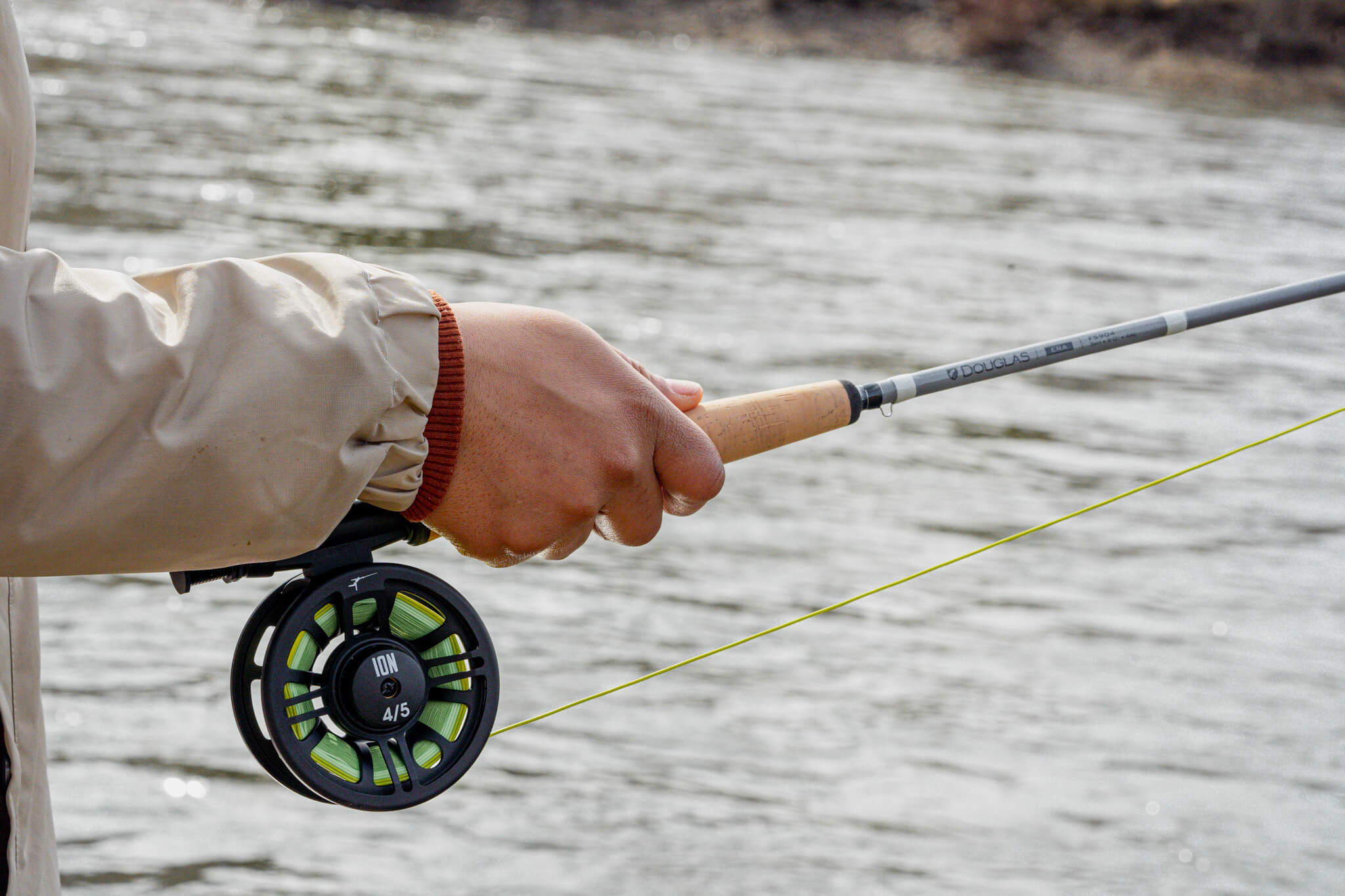Fly Fishing Roll Cast
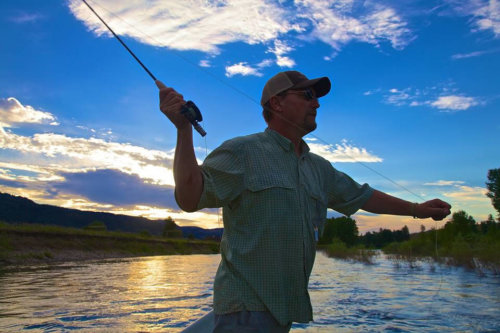
The fly fishing roll cast gets it’s own page because it’s such a versatile cast. It’s used to control slack in a river cast, to fly cast when there’s no room for a back cast, and get your fly back on the water more rapidly.
The roll cast differs from a traditional fly cast because the fly line never leaves the water on the back cast. The traditional cast uses the weight and momentum from an airborne back cast to load the rod. The Roll Cast uses the water’s surface tension to load the front cast.
When you’re on the water, you feel extra pressure on the line not present on land. A floating fly line rests in the surface film of the water, and the surface film creates friction against the line when you start the back cast. This helps load the fly rod on the back cast, and you don’t get this feel when you’re learning to cast on the ground. The Roll Cast depends entirely on the surface film friction to load the rod coming forward.
Unlike the standard cast, the Roll Cast can’t be practiced on dry land. No surface film on land, no tension to create the front cast. The best place to practice the Roll Cast is a pond or lake. Again, this keeps you from having to deal with moving line due to current in a river. If you only have access to moving water, face downstream, and allow the line to straighten out below you.
The mechanics of the Roll Cast are as follows. Get about 35 feet of fly line out in front of you. You may have to use a standard cast to do this, or allow the current to take the line downstream. Face your target, point the tip of the rod at the end of the fly line. The rod should be at a 45 degree angle to the body, and 20-40 degrees above parallel to the water. The higher the angle, the more line is off the water, and the easier the cast is to execute. Conversely, the more line off the water, the easier it is to pick up the line completely, ruining the roll cast. At the start of the Roll Cast, the tip of the rod should be pointing directly at the fly.
Slowly sweep the rod backwards, maintaining the angle and keeping the line in the water. Maintaining line contact with the water is critical. Sweep the rod back too quickly or too high and the line lifts from the water, losing surface tension. Once the rod hits the 2:00 o’clock position in the back sweep, bring the rod perpendicular to your shoulders and make a standard front cast from 2:00 to 10:00. The line closest to you will lift off the water and go forward, pulling the rest of the line off the water in a roll, ending with the line extending. At no time does the rod stop moving during the front and back casts. The back sweep gets the fly line moving. Pause between back and front cast, and the fly line loses its momentum, drops back to the water and is much more difficult to lift out of the water.
Notice the Roll Cast does NOT occur in the same plane. The line is swept back at a 45 degree angle. Then the rod comes perpendicular to the shoulders and goes forward. Another way to think of perpendicular to the shoulders is the rod is now in the vertical plane next to your body. When you cast forward from that position, the line is moving forward in a different plane than it came back. This eliminates the tangle that often occurs when the line is taken back and sent forward in the same plane. Trust us, your going to tangle a few Roll Casts in the learning process.
It goes back to this basic concept. The line follows the tip of the rod. When you bring the line back with the rod extended away from your body, the line is placed in that plane. When you switch planes to cast forward, the line unrolls in a different plane than the backward sweep. This means the line unrolls next to the path of the back sweep, not directly in the plane of the back sweep, eliminating tangles.
If you’re interested, google Belgian Cast. It’s a standard cast that follows the same rod tip path the Roll Cast does. There are so many ways to cast a fly rod- don’t get bogged down in one method! The staff at Missoulian Angler has combined casting instruction of over 60 years. It all boils down to finding the correct analogy for the person being taught- that AHA! moment! It’s there for everyone, you just have to find it!
The fly fishing Roll Cast is very useful when you find yourself with obstructions behind you. Sometimes a tree, sometimes a high bank, but something that eliminates a standard back cast. Since the line travels no further behind you than the tip of the rod, the Roll Cast allows you to get your fly to the fish in places where a traditional cast is ineffective. Happens more than you think, especially in smaller waters.
It’s also a great line control technique when fishing upstream in a river. You cast upstream, and the fly line immediately begins to come back downstream. The left hand is removing the slack, keeping the line in control. You quickly find you need at least 20 feet of line extended from the tip to recast quickly, minimizing false casts. If the left hand has stripped in too much line, false casting is made difficult, and you’ll need many false casts to get your fly back on the water.
The Roll Cast is extremely useful in getting your fly up off the water to start a new series of casts. When the fly has drifted out of the strike zone, simply stop stripping with the left hand. Place the tip of the rod at the 2:00 o’clock position, and allow the current to remove the slack, creating a loop in the water below you. When the slack is gone, simply Roll Cast upstream, and immediately make a standard back cast. You’re back in the game much faster than if you’d stripped in line in the traditional manner, and then false cast it out to the required distance. This is a very graceful movement, and makes you really look like you know what you’re doing!
The Roll Cast is one of the most useful casts you can learn in fly fishing, and there is a school of teaching that begins the casting journey through the Roll Cast. It’s used on the water in many situations, and once mastered will become an important part of your on water casting arsenal.
